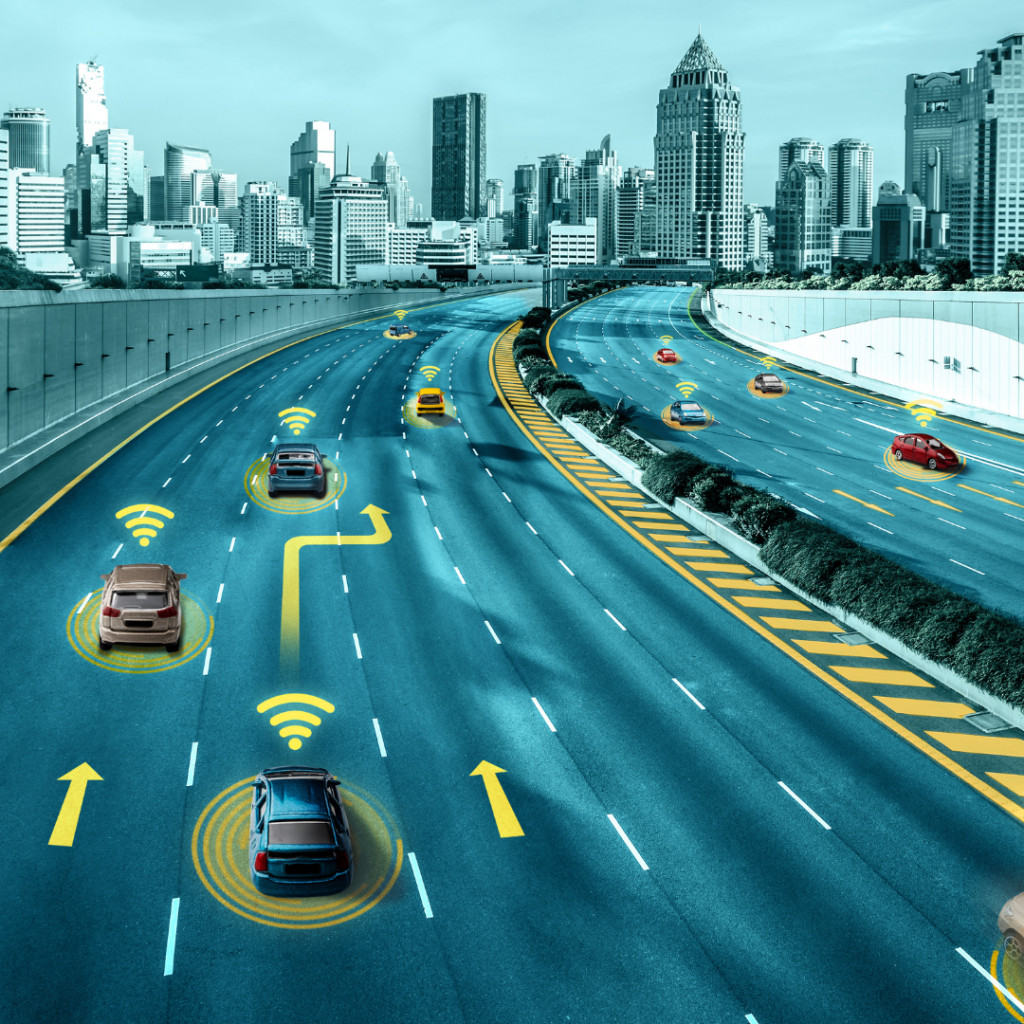We were promised autonomous vehicles by 2016. We’re just now getting those rides.
Road accidents rank among the leading causes of death in the U.S., and over the past few years, things are actually getting worse. The National Highway Traffic Safety Administration estimated that nearly 41,000 fatalities occurred due to motor vehicle accidents in 2023.
To tackle this crisis, automakers are pouring billions into self-driving technology. In what's generally considered the eventual, broad vision of the future, you don’t have to drive at all. Computer algorithms guided by a bunch of cameras, radars and sensors will happily do that for you.
How realistic is this vision? And how much better would they be compared to the safety systems that are currently in place?
“Crash avoidance technologies are preventing crashes and are becoming more available on new vehicles,” David Kidd, a senior research scientist at the Insurance Institute of Highway Safety (IIHS) told InsideEVs.
But there's still a lack of solid data to support the claim that autonomous cars will further the effectiveness of what ADAS systems can already achieve.
Most modern cars are equipped with ADAS features such as forward collision alerts, autonomous emergency braking, lane keep assist, blind spot monitoring and more. IIHS said these systems substantially reduce the types of crashes they were designed to address. They act as a safety net, offering a layer of additional protection.
Take AEB for example. It relies on radar and cameras to monitor the road ahead. When it detects danger, it first analyzes if you’re taking reactive measures, such as braking or steering to avoid the obstacle. If you fail to react in time, AEB automatically brakes to slow down or stop the vehicle.
IIHS said AEB reduced police-reported rear-end crashes by 50%. Other features such as adaptive cruise control, lane-keeping assist and blind spot monitoring are effective too.
The same cannot be said for Level 2 systems like Tesla’s so-called Full-Self Driving, Ford’s Blue Cruise or General Motors’ Super Cruise—where cars can drive semi-autonomously with driver supervision in certain conditions.
“Automation changes how people interact with the car,” Kidd said. “People may become more comfortable over time using it and they engage in more distracting activities.”
The NHTSA recognizes distracted driving as a problem but has not linked that to self-driving systems yet. “NHTSA will continue to hold manufacturers accountable for any products that introduce an unreasonable risk to safety,” an NHTSA spokesperson said. “The agency has opened multiple investigations regarding potential safety defects in ADAS and ADS, which have led to several recalls…”
Yet, there’s conflicting data on how self-driving tech impacts road safety. One study published in the journal Nature in June this year said self-driving cars generally had a lower chance of accidents than human-driven vehicles in similar scenarios. But they caused more accidents than humans during dawn, dusk or “turning conditions.”
Safety Tech Gone Too Far?
A different study that analyzed an NHTSA database found that accidents involving cars equipped with Level 2 systems were increasing. Although, those crashes were categorized based on what the vehicles were equipped with, not on what was reported to be engaged during the accident.
Tesla periodically releases Autopilot data to showcase improvements in the number of miles driven per accident. But we’ve seen multiple reports of Teslas equipped with Autopilot and FSD being involved in fatal crashes, prompting U.S. Justice Department and NHTSA investigations.
“The bottom line is that we have strong evidence that crash avoidance technology is preventing crashes and reducing injuries,” Kidd said. “Once you add automation or ADAS in the vehicle, we're not seeing any change in terms of safety. Really the only benefits or any potential benefits are convenience and comfort.”
Granted, automation is relatively new. It may require millions of additional miles driven before we see more accurate results. But at this point, those systems are far from perfect. Experts seem to agree.
“OEMs that sell cars to consumers and are claiming they have self-driving technology are not telling the truth about their car’s system's capabilities,” Richard Schram, the technical director at Euro NCAP, told InsideEVs. He said ADAS systems have been helping improve driver performance for years, but it doesn't take responsibilities away from the driver.
Now the challenge is for drivers to learn the skills needed while using automation, Kidd said. Just like EVs require a steep learning curve as a fresh technology, autonomous driving would also need substantial driver education on how and when to intervene, which conditions are safe with hands-off the wheel and so on.
He added that regulators should prevent automakers from allowing drivers to switch off certain crash avoidance systems like lane departure warning. “We don’t think that should be allowed, especially knowing that it makes driving safer.”
Now the NHTSA is finally taking steps to make certain systems like the AEB mandatory on all cars. The agency announced in April this year that by 2029, AEB would be standard on all passenger cars and light trucks. The system must detect pedestrians at dawn, dusk and during turning.
“Companies want to keep pace with the bleeding edge of technology. It's a bit of an arms race,” Kidd said. “As a driver, not having to participate in the mundaneness of operating a vehicle, that's very appealing. But we're just not there yet.”
A Question of Trust and Training
No matter how much we try to tell ourselves otherwise, human beings are far from perfect. Whether it’s forgetting to put the bins out or dropping a glass while washing up, we all make mistakes, and we make them every day. So, it’s no surprise that some of the leading causes of car accidents essentially boil down to human error.
Nor is it surprising that legislators, tech gurus and car makers are trying to support drivers as much as possible to minimise mistakes and make roads safer. Cars are increasingly tech-laden anyway, and some of that technology is being used to help reduce speeding or to stop cars from ploughing into the back of one another when the drivers are distracted. It all sounds like a clever idea, but road traffic fatality rates are on the rise, which begs a simple question: is this technology helping or hindering progress on road safety?
The Argument for Driver Assistance Systems
The argument for high-tech driver assistance systems is self-evident. If you can reduce the number of mistakes drivers make, you limit the main cause of crashes, and should therefore cut the number of people who die on the roads. As arguments go, it’s bulletproof, so manufacturers and engineers have been hard at work creating technology that’s designed to cut our chances of having a collision.
That’s why new cars come with autonomous emergency braking (AEB), which can slow or even stop the car if it detects a hazard to which the driver has not reacted. The idea is that if you’re on your phone (please don’t use your phone when driving) and you don’t spot the car ahead braking, the car will prevent you slamming into the back of it. Or it will at least slow you down to reduce the impact.
Similarly, lane departure warning (LDW) tech is common on new cars, there to alert drivers if the car wanders out of its lane due to their inattentiveness. And a new EU edict means new cars now must have a speed limit warning system that’s designed to ‘see’ the road signs and bong if the car exceeds the limit.
A Question of Execution
This all sounds reasonable. Why are we asking whether it’s a good idea?
There’s nothing wrong with the ideas, but the execution is what we’re questioning, and those questions are raised by the statistics. In 2021, 130 people were killed on the roads of Ireland, but that figure rose to 155 in 2022 and 184 in 2023. Over that time, thousands of new cars have hit the road, armed with some or all this new technology, and yet fatalities are on the increase.
While there is no evidence to link this increase to the technology in cars, there is anecdotal evidence that suggests it isn’t always as helpful as it might be. In our review process, where we assess cars’ safety systems in the real world, we’ve experienced all kinds of issues with technology that seems to work well in the sterile world of a lab, but not on the open road.
Take, for example, the new speed limit warning tech, which bongs at drivers when they exceed the limit. The whole system is based on the car having accurate speed limit data, whether that comes from navigation tech or road sign recognition. If the speed limit information is faulty for any reason — be it an overgrown hedge shrouding a sign or outdated navigation data — the system will bong at drivers unnecessarily. And this isn’t limited to certain manufacturers. We’ve experienced this in all sorts of cars.
Similarly, we’ve experienced ‘false positives’ from AEB tech that brakes seemingly because there’s a crisp packet in the road, creating a hazard for other motorists, and we’ve seen lane-keeping assistance tech that tries to push drivers into the path of oncoming traffic on narrow country lanes or where the white line is worn out.
The Price of Inconvenience?
That isn’t ideal, but if it saves a life or two, then surely some inconvenience is a small price to pay?
Arguably so, but such a situation effectively has two possible outcomes. Either the driver loses trust in the system and ignores it, or they switch it off altogether for some peace and quiet, ‘safe’ in the knowledge they know better than the car. Either way, the system doesn’t necessarily make the car any safer.
Alternatively, under-trained drivers who don’t understand the limitations of the systems may find themselves trusting the systems to keep them out of trouble too much, putting themselves in all kinds of bother. And if you think that won’t happen, just ask all the people who trust their navigation implicitly, right up to the moment it directs them into a river.
Driverless Cars: The Ultimate Solution?
Maybe, but they’re some way off now. Some driverless technology is in development and simple driverless systems are available commercially, but none is advanced enough to take over a whole journey — at least not to a standard deemed safe enough for complex, and sometimes archaic European public roads. For now, semi-autonomous driver assistance technology is about as good as it gets.
A Balanced Approach to Road Safety
So, has safety tech gone too far?
There is no simple answer. If we want to reduce fatalities on the road, we need an integrated approach to safety, which includes making changes to driver training, safety technology and road design. In an ideal world, we’d have highly trained drivers who know their car inside and out, while the roads would be purpose-built and maintained to the highest possible standards and the tech would be honed for decades before being used in consumer products.
If we could do that, we wouldn’t have to ask this question, but we don’t live in an ideal world. We live in the real world, with low road maintenance budgets, drivers with comparatively little training and nascent technology being forced into cars by well-meaning but over-zealous regulators. In that world, we need to do more than just add some tech and hope it works. So, you could argue that we haven’t gone too far. We just haven’t gone far enough.

















